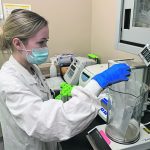Canadian Grain Commission facility focuses on quick analysis as it aims to identify crop disease at the microscopic level
In the Canadian Grain Commission’s laboratories, the rapid evolution of technology is allowing scientists to spot, catch and exactly identify specific strains of diseases like fusarium, the toxins they produce and many other threats to grain quality and safety.Tag Archives fusarium
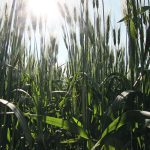
Food inflation sees increasing consumer demand for pasta
Grocery buyers seeking an affordable way to feed their families are looking toward pasta as an “inflation-proof” meal idea, says a durum wheat merchandiser with pasta maker Barilla. “The high inflation rate is actually causing greater demand for pasta,” said Greg Viers, Barilla’s durum wheat and semolina purchasing manager for the United States and Canada. […] Read more
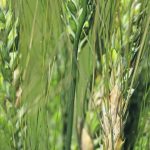
Fusarium infection shows one-year dip in Alberta
The second year of a fusarium graminearum infection study in Alberta’s cereal and corn crops shows a slight decline compared to a year earlier but the disease continues to be prevalent throughout irrigated acres. The disease, which results in fusarium head blight (FHB), is seeing infection rates as high as 50 percent in Lethbridge County, […] Read more
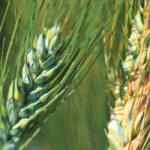
Alta. seed survey tracks fusarium prevalence
Grain growers in Alberta have gained access to a valuable new tool aimed at controlling the spread of Fusarium graminearum. Last month, the Alberta Seed Processors released an interim report that quantifies the incidence of the pathogen on seed samples submitted to Alberta seed testing labs. The report, which includes a provincial map showing the […] Read more
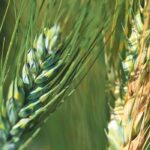
Check-off protest erupts over fusarium
Some producers in Alberta’s northern rural municipalities are requesting refunds of wheat and barley check-off payments as a way to protest the removal of fusarium from the Alberta Pests Act. The crop disease has been slowly spreading westward for decades and until a change in May to the Pest Nuisance Control Regulation, Alberta had a […] Read more
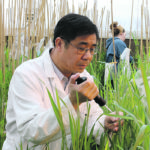
Gene discovery brings FHB resistance to cereals
New Fhb7 varieties of wheat with better FHB resistance may be available in a few years, developed in North Dakota
Plant geneticists the world around are devoting billions of dollars and centuries of accumulated time trying to breed better fusarium head blight resistance into wheat. Some fail. Some succeed. One of the most promising endeavours is the discovery and cloning of a gene that has been named Fhb7. The gene reduces FHB by detoxifying mycotoxins […] Read more
Alta. removes fusarium from pest act
The Alberta government is removing fusarium graminearum from its pest regulation, a move industry says will allow for better management of the disease. The government said in a news release today that regulating the disease has failed to stop it, arguing the changes allow for the modernization of management practices. It said rates of fusarium […] Read more
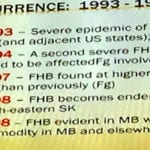
Community builds to fight fusarium
Not a lot of people are members of the “fusarium headblight community,” but for the few hundred who are, it’s a rich society of researchers, agriculture industry players, government officials and farmers. That community recently gathered in Winnipeg, and it became clear that one of the triumphs of fusarium research has been the creation of […] Read more
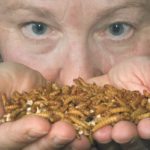
Got fusarium? Turn to worms
Insects and disease are two enemies of the prairie wheat farmer, but researchers feel there is a unique case where one can help deal with damage inflicted by the other. Researchers at the University of Saskatchewan have determined they can fatten up mealworms on a diet of fusarium-damaged wheat and then safely feed the mealworms […] Read more
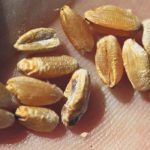
World doesn’t end after fusarium, clean it
BRANDON — It’s easy to throw in the towel when looking at a bin of grain heavily damaged by fusarium. However, feed scientist Rex Newkirk says farmers can salvage “significant value” from grain they are assuming has little. “There’s lots of value to be had,” Newkirk, a University of Saskatchewan researcher, said after a presentation at […] Read more

